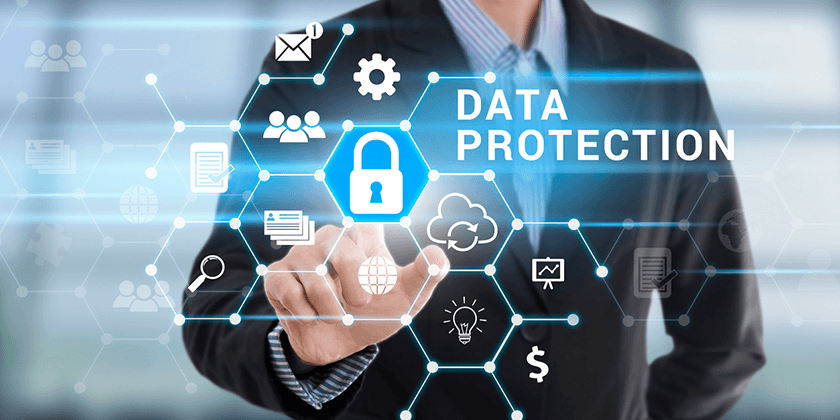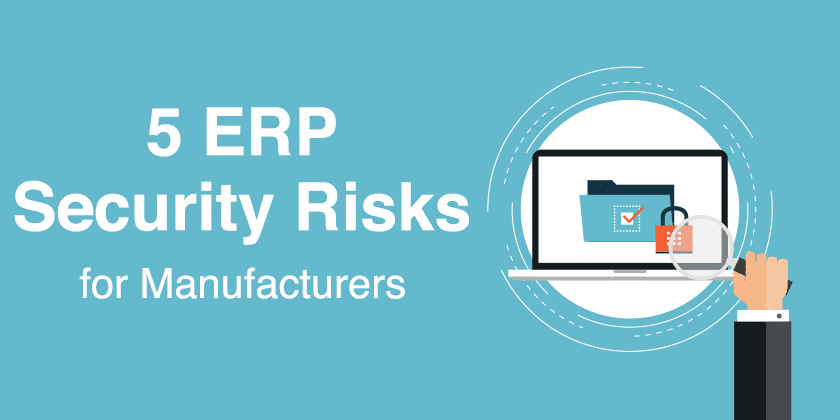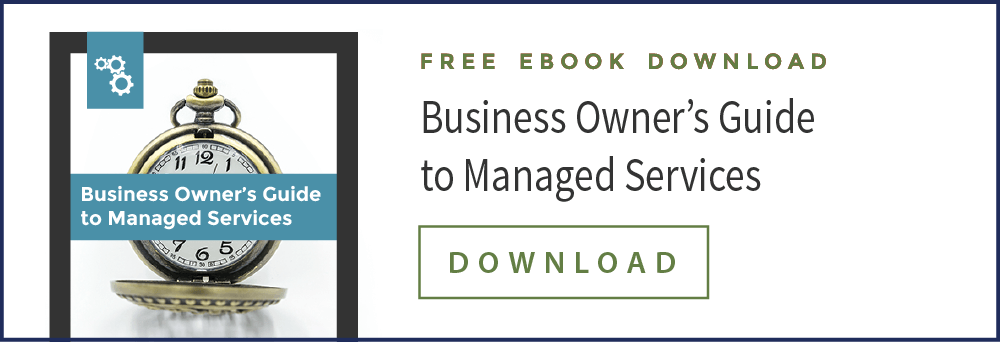Manufacturers need a layered security approach to protect their ERP systems from cyberattacks, data leaks, and system failures.
One simple security step is not enough when hackers target valuable production data.
In this blog, you will learn why layered security is important for manufacturers, how it works, and the best ways to keep your ERP system safe and your business running smoothly.
What Is a Layered Security Approach in Manufacturing?
A layered security approach in manufacturing is the implementation of several security measures that work in conjunction with one another to ensure every aspect of your ERP system and production environment is protected.
Adding redundancy — if one layer is compromised, there are others in play to secure your data and systems — is the idea behind layered security. Manufacturers must use this approach as ERP systems contain sensitive data like supply chain data, production schedules, and financial information.
At any moment, cyber threats, internal errors or system failures could wreak havoc with a costly disruption. Manufacturers can build maturity through multiple layers of protection including network security, application protection, access control, and continuous monitoring to enhance ERP systems security against growing cyber threats.

5 ERP Security Risks
As an ERP system can deliver a lot of value across manufacturing businesses of all sizes, there are certainly disadvantages of consolidating all your critical data into a single system. There are different types of ERPs used for various purposes and each one comes with its own sets of threats.
1. Crashes and Software Integration Issues
If you want to prevent system crashes occurring or incompatibility issues between other products or devices, then upgrading your software is one of the easiest ways to do so.
It also helps safeguard your data from malicious attacks that often exploit bugs in legacy software to get a backdoor into systems. And if you are not using the most current version of your software, you can miss out on technical support.
2. Loss of Data Control Due
In the absence of specific Data control features in an ERP system, employees tend to use alternative means to manage the data. This usually includes a wealth of company data that resides on more accessible and user-friendly software systems.
What if someone steals valuable information stored in a place separate from your ERP system and can lead to the loss of power? To make matters worse, you, as management, will no longer have a clear picture of your business data or how many of these “user systems” exist in the company.
Normally, this type of loss can be prevented by creating a directory for these files on the server where it is backed up regularly.
Changes in Software Functionality
Software developers inside the organization must be granted access to system functionality and back-end code. Yet if you don’t, some ERP systems are designed to allow this, leading to critical modifications to your software’s functionality if at least some user-based access restrictions aren’t implemented. In addition, enterprise data could also be compromised as developers change a system’s configuration that redefines how your ERP software operates.
Delays in Software Updates
When a security bug has been discovered, or a new feature becomes available, companies that produce software update their products. However, ERP vendors struggle to deploy the most recent software updates, especially since 66% of customers aren’t working with the latest version of their respective offerings.
Cunning hackers can exploit such vulnerabilities to access your company’s most sensitive data. This challenge has increased the demand for SaaS ERP applications with real-time updates.
Lack of Compliance
The credit card industry has particular rules regarding collecting credit card information. But many legacy ERP systems don’t meet those requirements, leaving clients’ credit card information vulnerable. A compliant ERP system must use strong firewalls, random passwords, data controls, and backup precautions.
Key Layers of Security for ERP Systems
We can see it like an onion, with each layer representing a level of protection that we offer our systems to protect them from threats and vulnerabilities. These are:
Network Security and Firewalls
The first layer is responsible for the network: our first line of defense. In this layer we can prevent unauthorized access to data using firewalls, intrusion detection systems and network segmentation to determine exposure to attacks.
Identity and Access Management (IAM)
In this layer, we make sure that access is authenticated to authorized users, preventing information leakage even within company departments.
Data Encryption and Backup
Last but not least, we protect data against the risk of interception or theft with encryption. In addition, backups are applied to ensure a backup of the information and to be able to restore it from a certain point in case of a security breach or any other incident.
Best Practices for Implementing Layered Security in Manufacturing
To get the maximum protection, manufacturers have to use best practices when deploying a layered security strategy for ERP systems:
Conduct Regular Risk Assessments
Regular assessments are fundamental to discovering vulnerabilities in your ERP system and infrastructure. When we are aware of potential risks, we can strengthen weak points much more and attack those loose ends to be ready against any cybernetic threat.
Train Employees on Cybersecurity Awareness
Data breaches continue to be primarily caused by people. To mitigate insider threats and avoid accidental exposure of sensitive data, provide ongoing phishing, password hygiene, and safe software training for employees.
Partner with Cybersecurity Experts
Team up with IT security experts to ensure you have the layered defense system in place and that it is being monitored. Experts that ensure compliance, implement the latest security technologies and quickly respond to any incidents.
Just How Secure Is Your ERP Solution?
Although your business requires custom ERP systems tailored to your unique needs, ERP systems are complex systems, which means they can be intricate and challenging to comprehend. The best way to achieve this is via layered security.
Antivirus software is a first step in the right direction and protects your data against a huge range of threats, including ransomware, keystroke-tracking malware, spyware and Trojan horses, among others. Similarly, a secure firewall—preferably linked to a non-visible network—is equally important for preventing prying eyes from accessing your ERP database.
As a generalization, as more security still relies on your own jurisdiction (as above), if you are storing all your enterprise information in one place, if there is one weak link in a server, network or similar asset, then the whole database will be under attack.
Many manufacturing firms have identified that their ERP software can no longer cover emerging security or technology requirements. This is why SaaS ERP is becoming more and more popular. In doing so, most of the most worrisome data security threats can be alleviated or even eliminated by relying on remote data storage in the cloud.
In addition, a SaaS ERP is less expensive and lowers operating costs by eliminating continuous IT maintenance and troubleshooting.
Monitoring network activity, too, is critical to better securing ERP systems. With an IDPS, you will be better able to determine the source of threats, if the risk came from someone inside the organization, and how it was able to breach your layered security protocols.
You are dealing with network security so it can build a blacklist that makes your firewall or ISP know what “bad” or “dangerous is.” Only through a well-rounded or layered security approach will it be possible for your organization to effectively detect and block such attacks, in light of the growing sophistication of cyber attacks.
An ERP system will create a bigger picture for your company, manage and protect your enterprise data, make your systems more efficient, and make your data streams more accessible, centralized, and accurate.
You and your business can speed up your ERP process while securing your enterprise data by using IT managed services and a layered security defense.



